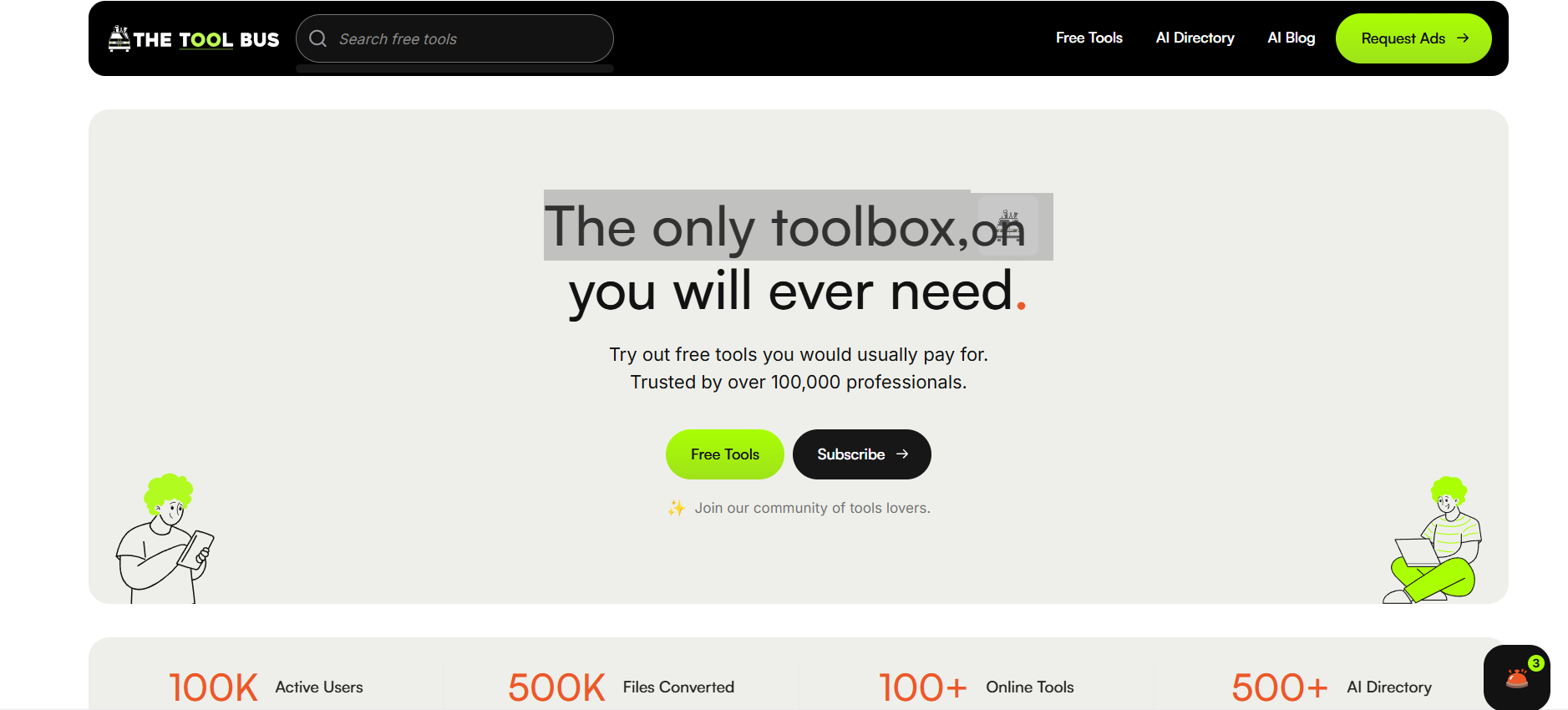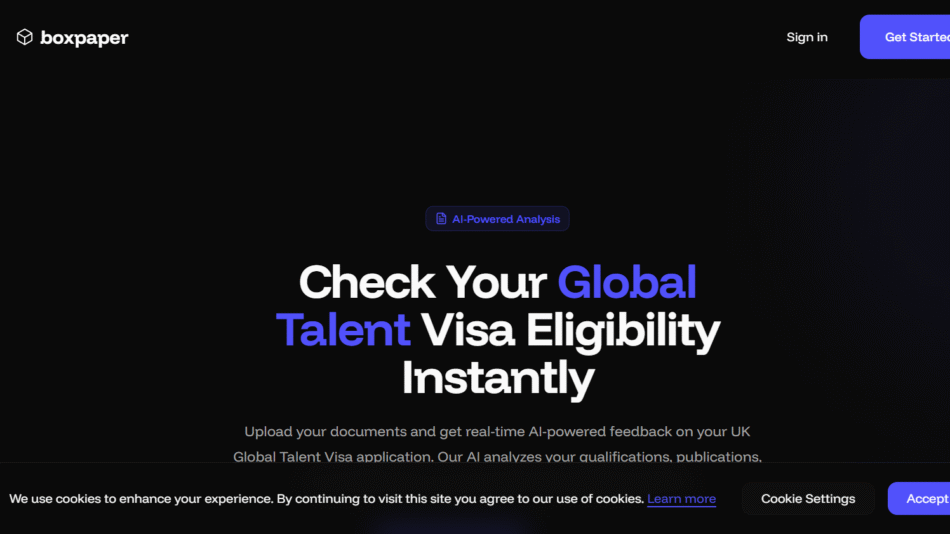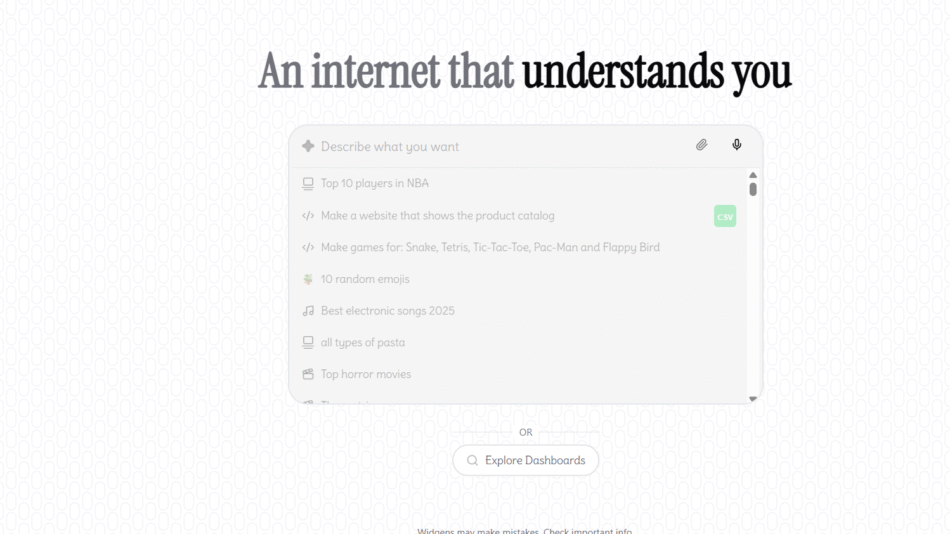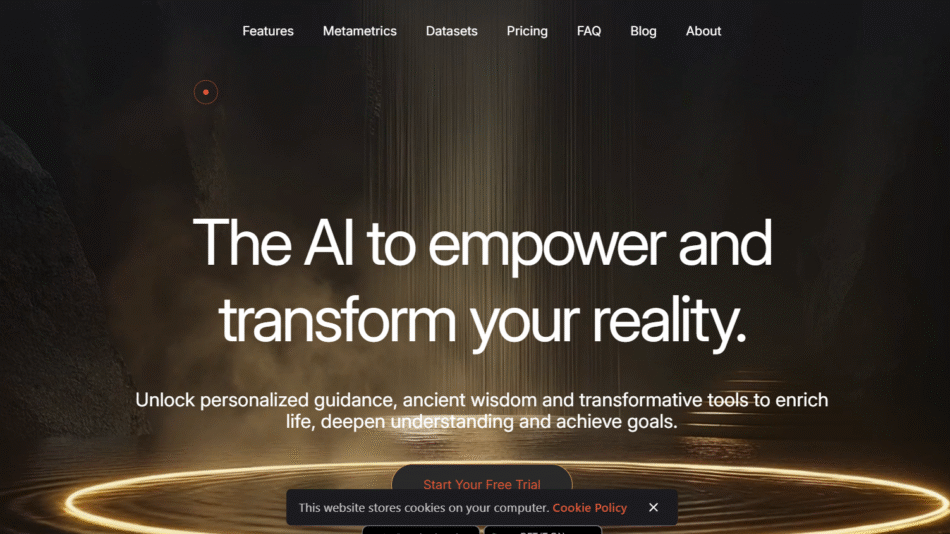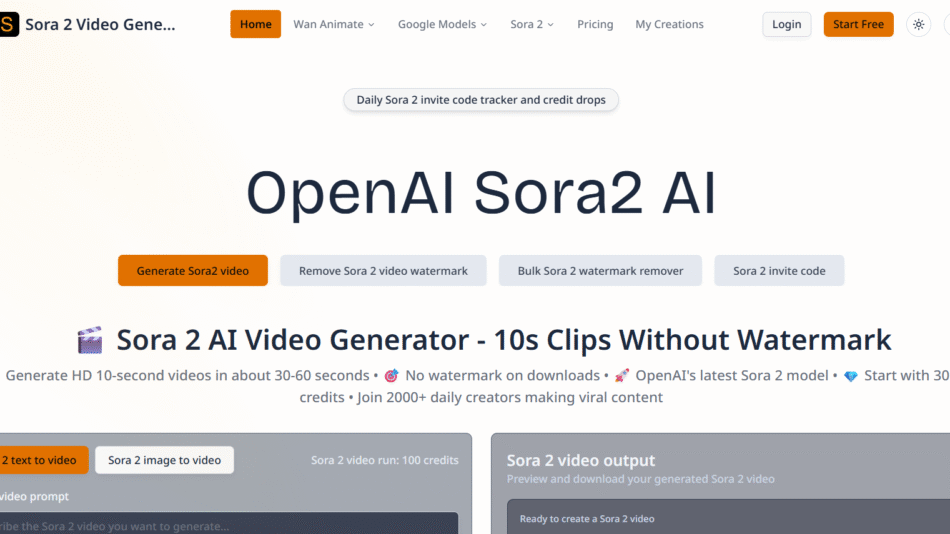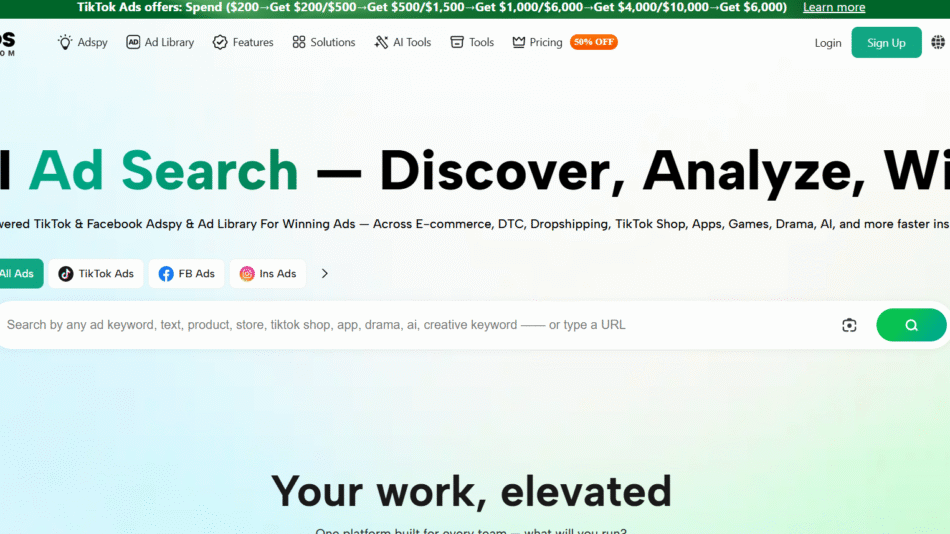The Tool Bus is a curated AI tool directory that aggregates and showcases a wide range of artificial intelligence tools aimed at creators, developers, marketers, and businesses. Designed to simplify AI discovery, The Tool Bus serves as a central hub where users can explore the latest and most effective AI tools across multiple categories. With new AI solutions launching daily, it can be overwhelming for users to keep track of what’s relevant or trustworthy. The Tool Bus addresses this by offering a well-organized and constantly updated platform that makes it easier to find tools based on function, popularity, or category. Whether you’re a professional looking to streamline your workflow or an enthusiast eager to experiment with AI, The Tool Bus provides the resources to get started quickly.
Features
One of The Tool Bus’s standout features is its clean, user-friendly interface that focuses on intuitive navigation. Users are greeted with a homepage that highlights trending tools, new entries, and a categorized breakdown of the most popular AI solutions in use today. Categories include design, writing, audio, video, marketing, productivity, and development, among others.
Each tool listing contains a brief overview, direct website link, tags for better discoverability, and often a thumbnail for visual reference. There’s also an embedded upvoting system that allows users to signal which tools are gaining traction.
The site includes a search bar that supports keyword-based searches, helping users find tools more efficiently. Another helpful feature is the “trending tools” section, which allows users to discover popular and rising AI applications quickly.
The Tool Bus is constantly evolving, and the team behind the site appears committed to maintaining relevance by adding new tools and updating existing entries regularly.
How It Works
Using The Tool Bus is straightforward. Visitors can begin by browsing through categories or checking the home page for trending and new tools. Each tool entry acts as a quick summary, providing essential details such as what the tool does, which category it belongs to, and a link to access the official website.
If a user is looking for a specific type of tool—for example, an AI writing assistant or video generator—they can use the category filters or type keywords directly into the search bar. Once a tool is selected, users can click through to the developer’s site to learn more, register, or begin using the tool.
The upvote feature adds a social element, allowing the most popular or useful tools to rise in visibility. This community-driven feedback loop helps other users identify trustworthy and valuable tools without needing to do extensive research on their own.
Use Cases
The Tool Bus serves a wide audience across various industries. Content creators can use it to find AI-powered video editors, image enhancers, or writing assistants. Marketers benefit from discovering tools that help automate social media posts, optimize SEO, or generate ad copy.
Developers use the site to find AI APIs or SDKs that can accelerate software development. Business owners may find AI tools that help with customer support automation, analytics, and productivity enhancements.
Educators and students can use The Tool Bus to explore learning aids, research tools, and productivity apps. Freelancers across domains also use the directory to find AI apps that can save time and enhance service delivery.
Pricing
The Tool Bus is entirely free to use. Visitors can access the full directory, search functions, and explore individual tool listings without signing up or paying a fee.
The listed tools themselves may have varying pricing models, including freemium, subscription-based, or one-time payments. Each listing on The Tool Bus typically includes information about the tool’s pricing tier—such as whether it is free, paid, or offers a free trial—but for full pricing details, users are directed to the respective tool’s official site.
There is currently no evidence of premium features or subscription tiers for users on The Tool Bus itself. However, developers may be able to submit or promote tools through a contact or submission form, though this is not detailed prominently on the website.
Strengths
One of the greatest strengths of The Tool Bus is its simplicity. The user interface is clean, intuitive, and free from unnecessary distractions. Users can quickly find what they need without dealing with pop-ups or intrusive ads.
Its categorization system is effective and makes it easy to browse tools by function or use case. The trending and upvote features also help surface high-quality tools that the community finds useful.
Another advantage is the speed of the site—it loads quickly and performs well on both desktop and mobile. The constant updates and new listings show that the platform is actively maintained, which is critical in a fast-paced domain like AI.
Drawbacks
While The Tool Bus is a helpful discovery platform, it has some limitations. Most notably, individual tool pages are minimalistic and often lack in-depth analysis, reviews, or tutorials. Users seeking detailed comparisons or real-world feedback may need to conduct further research elsewhere.
Another drawback is the lack of community features like comments, ratings, or discussions. Although the upvote system adds a layer of community input, it’s relatively limited in terms of user interaction.
The Tool Bus also doesn’t provide in-depth filtering options like tool integrations, industry applications, or pricing models beyond basic tags. These features would be beneficial for users with more specific needs.
Comparison with Other Tools
The Tool Bus competes with directories such as FutureTools.io, AI Tool Guru, and TopAI.tools. Compared to FutureTools.io, which integrates more in-depth reviews and content from its creator, The Tool Bus focuses more on minimalistic, fast discovery.
Compared to AI Tool Guru, The Tool Bus offers a slightly more modern user interface but with fewer advanced sorting options. AI Tool Guru provides more educational content and blogs, whereas The Tool Bus centers almost entirely on listings and trends.
TopAI.tools offers a wide selection with additional tags and more granular filtering. The Tool Bus trades this complexity for speed and simplicity. For users who prefer a more curated and streamlined experience, The Tool Bus may be the better fit.
Customer Reviews and Testimonials
As of now, The Tool Bus does not feature user reviews or testimonials directly on its website. However, the platform has been positively mentioned on community sites like Reddit, Product Hunt, and LinkedIn. Users appreciate the quick access to AI tools and the simplicity of the interface.
The upvote feature provides a lightweight signal of popularity but doesn’t substitute for detailed user feedback. To gain more trust, The Tool Bus could benefit from integrating verified reviews or even user-submitted case studies in the future.
Still, early adopters and casual users report a positive experience overall, noting that it’s a great way to get a snapshot of what’s currently trending in the AI landscape.
Conclusion
The Tool Bus is a clean, efficient, and user-friendly directory for discovering new and trending AI tools. Whether you’re a content creator, marketer, developer, or business professional, the platform makes it easy to find AI tools that match your needs without spending hours searching.
Its strengths lie in its minimal design, fast performance, and regularly updated database of tools. While it could improve by adding more advanced filters and in-depth reviews, it still serves as a valuable starting point for anyone exploring AI technologies.
For anyone looking to stay ahead in the fast-evolving AI space, The Tool Bus offers a quick and reliable way to discover the tools that matter.
